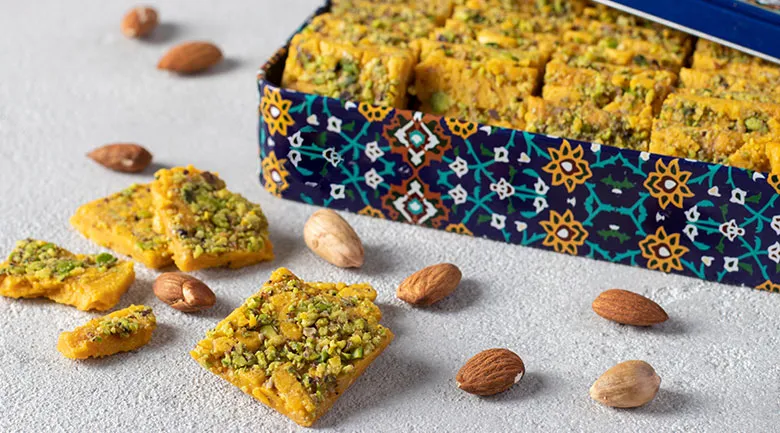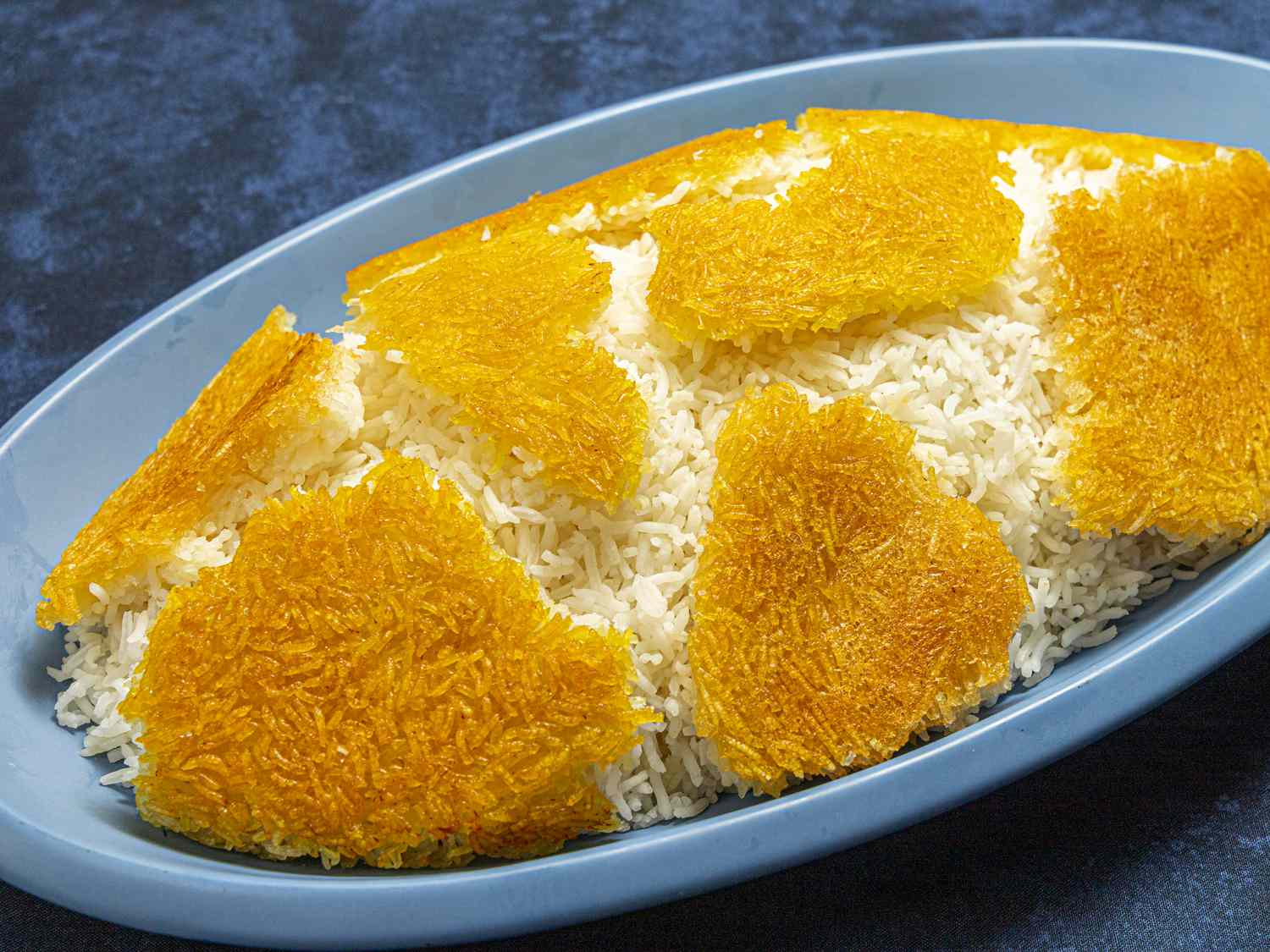Persian cuisine is famous for its rich, diverse flavors, and when it comes to desserts and sweets, it’s no different. From the delicate fragrances of rosewater to the bright, tangy sweetness of pomegranate, Persian desserts offer a sensory experience that leaves a lasting impression. Whether you’re indulging in a festive occasion or enjoying a quiet evening with tea, Persian sweets are an essential part of Persian hospitality and culture. So, let’s embark on a delicious journey through the world of Persian desserts!
🍮 The Role of Sweets in Persian Culture
In Persian culture, offering sweets is a gesture of hospitality, celebration, and joy. Sweets are often served with tea, and they play a prominent role during important occasions such as weddings, birthdays, Nowruz (Persian New Year), and other festive events. Persian desserts are often characterized by a balance of flavors—sweetness complemented by tangy, floral, or herbal notes. Ingredients like saffron, rosewater, and pistachios are frequently used to enhance the flavor and aroma, making every bite an experience to remember.
🍰 Must-Try Persian Desserts
Here are some of the most iconic Persian desserts that showcase the unique and delicious flavors of Iranian sweets.
1. Baklava
Although not originally Persian, baklava has become a beloved dessert in Iran, particularly in regions bordering Turkey and the Caucasus. This rich, flaky pastry is made from layers of filo dough, filled with a mixture of chopped nuts (usually pistachios or walnuts) and sweetened with rosewater syrup. The result is a perfectly balanced treat with a crunch that gives way to a soft, sweet filling.
2. Saffron Ice Cream (Bastani Sonnati)
There’s no better way to cool off on a warm Persian summer day than with a scoop of Bastani Sonnati, a traditional Persian ice cream that combines the exotic flavors of saffron, rosewater, pistachios, and vanilla. The creamy texture and unique combination of flavors make it unlike any other ice cream, and it’s often served with a touch of cucumber sorbet or between layers of wafer for added crunch.
3. Faloodeh
A refreshing dessert perfect for hot days, faloodeh is a Persian frozen treat made from thin rice noodles suspended in a sweet rosewater syrup with a squeeze of fresh lime juice. Often garnished with cherry syrup, this dessert is both tangy and sweet, making it a perfect balance for the warm weather.
4. Zoolbia and Bamieh
These sweet, deep-fried pastries are a favorite during special celebrations such as Ramadan and Nowruz. Zoolbia is a syrup-soaked, crispy dough that is shaped into intricate loops and rings, while Bamieh is similar but shaped into small doughnut-like pieces. The sweetness from the rosewater syrup combined with the fried, crunchy texture creates a satisfying contrast that is hard to resist.
5. Shirin Polow
Although traditionally considered a main dish, Shirin Polow (sweet rice) is often enjoyed as a dessert. It’s made with basmati rice, orange zest, saffron, and candied fruits, and it’s typically served with a side of kebab or stews during celebratory meals. The sweetness of the rice is balanced by the richness of butter and the aromatic touch of saffron.
🍪 Sweets with a Storied Past
Persian desserts have a long and fascinating history, often tied to ancient customs, royal banquets, and the region's diverse cultural influences. These desserts have evolved over centuries, from the delicate, intricate pastries made for the royal court to the humble treats served in the homes of everyday Persians. Let’s take a look at some sweets with interesting backgrounds:
6. Shirini Keshmeshi (Date Cookies)
Dates have been a staple of Persian diets for thousands of years, and Shirini Keshmeshi is a sweet cookie made with dates, flour, butter, and a sprinkling of cardamom. Often served with tea, these cookies combine a rich caramelized flavor with the aromatic essence of cardamom, making them a favorite among Persian families.
7. Koloocheh
Koloocheh are Persian shortbread cookies stuffed with walnuts, pistachios, or dates. They are often spiced with cinnamon and cardamom and brushed with a sugar syrup for added sweetness. This comforting dessert is especially popular in the Kerman and Mazandaran regions and is frequently shared during Nowruz and Eid.
8. Saffron and Rose Water Cake (Cake Yazdi)
This moist, fragrant cake is infused with rose water and saffron, two of the most prominent flavors in Persian desserts. The cake is traditionally baked in small, individual portions and is perfect with a cup of tea. It’s often served during holidays or family gatherings, and the unique flavor combination makes it a memorable treat.
🍯 The Secret Ingredients: How Persian Sweets Stand Out
The magic of Persian desserts lies in their distinctive ingredients. It’s these special touches that make Persian sweets stand out from those of other regions:
-
Saffron: Known as the "king of spices," saffron adds an earthy, floral flavor and a vibrant yellow color to Persian desserts.
-
Rosewater: This delicate, fragrant water is used in many Persian sweets, giving them a fresh, floral taste that’s incredibly aromatic.
-
Pistachios: One of the most prized nuts in Persian cooking, pistachios lend a delightful crunch and subtle flavor to many desserts.
-
Cardamom: A warm and slightly spicy herb, cardamom is often used to infuse Persian sweets with a rich, aromatic complexity.
-
Dates: A natural sweetener, dates are commonly used in Persian desserts for their rich, caramel-like flavor.
🍴 Conclusion: A Sweet Taste of Persia
Persian desserts are more than just treats; they represent centuries of tradition, hospitality, and a deep love for the art of cooking. Whether you’re enjoying a cup of Persian tea with a piece of baklava, indulging in a bowl of saffron ice cream, or savoring the crispy delight of zoolbia and bamieh, you’re tasting the heart of Persian culture.
The next time you have the chance, don’t miss out on experiencing these wonderful sweets. Their intricate flavors, textures, and history will transport you to the enchanting world of Persia, where every bite is a celebration of life, love, and tradition.





